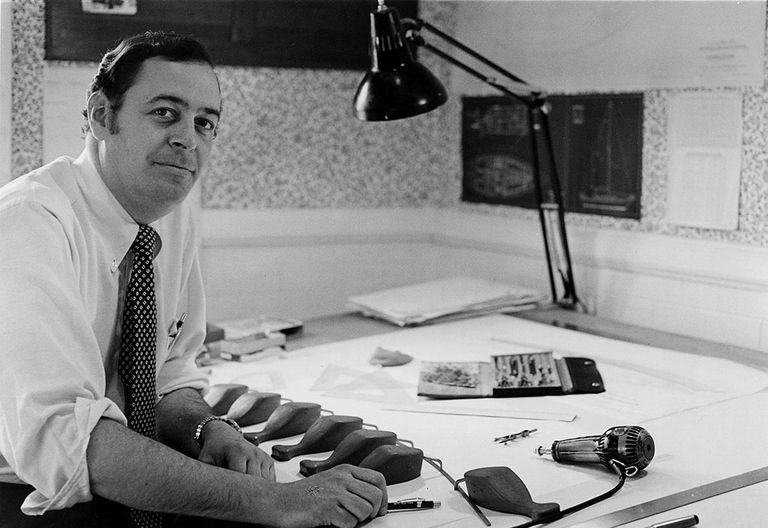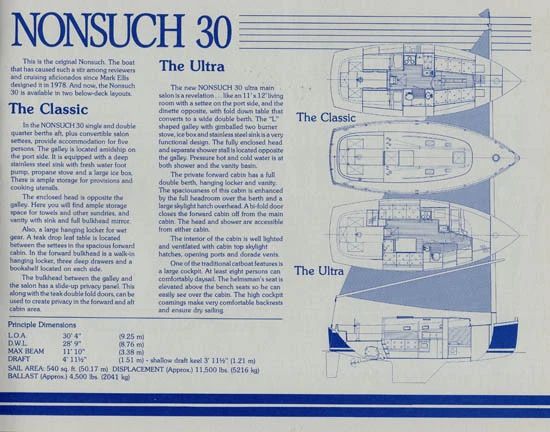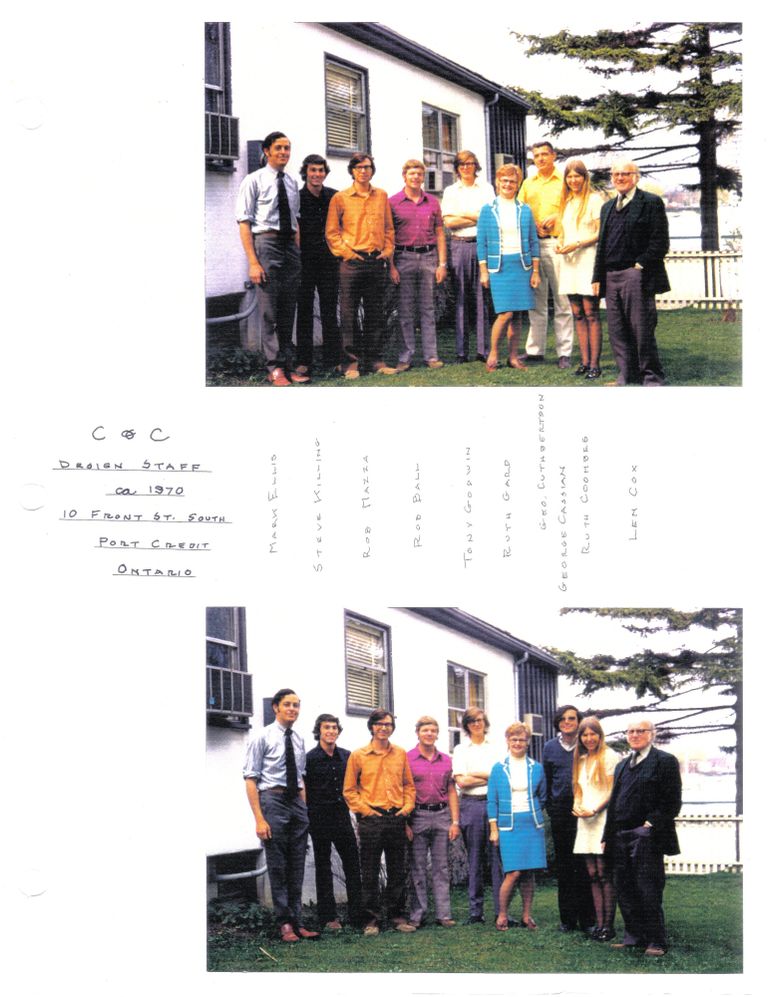


Mark Ellis
- 2025
Dan Spurr wrote an article on him in Good Old Boats and Mark talked about his time at C&C
“Before coming to Little Harbor, he'd written a query letter to George Cuthbertson at C&C Yachts, where a bunch of bright young designers were churning out dominating racers and popular performance cruisers and George C. was king of the court. A year later, in 1970, he got a call from Cuthbertson asking if he was still looking for work. A sponge who'd soaked up all the information he could in Marblehead, Mark headed west to Oakville, Ontario.
“I knew the area," he says, "and just at that time the amalgamation [of the four founding companies, Belleville Marine Yard, Hinterhoeller Yachts, C&C, and Bruckmann Manufacturing; see Good Old Boat, September 2002] was taking place.
The company's prospects were looking up. Henri Adriaanse, who'd worked for E. G. Van de Stadt, and I were the only ones who'd worked in an outside design office. The others.
like Rob Ball and Rob Mazza, all grew up there.
"It was the hot place to be in the early 1970s. We were working on pretty exciting stuff. Since I was now a rig specialist, I did the rigs, beginning with the C&C 61, Sorcery, and then the 43. I did all sorts of general stuff, too, but eventually drifted into the business end. They didn't really have a strong business orientation... boats would leave without being paid for, that sort of thing. I began selling boats for the B r u c k m a n n custom boat division and sailing a lot with clients — club races, the SORC, the Bermuda Race. I pushed the whole yachting establishment onto C&C, which was good “At C&C," Mark continues, "the development of a new model began with George Cuthbertson's preliminary drawings. He'd then send them to Henri Adriaanse, for the lines, and Rob Ball, who did all the technical stuff. George Cassian did the rigs, decks, and detailed metal pieces, and I was second to Cassian."
As he had everywhere else he worked, Mark learned a lot - about yacht design, construction, and sales. But in 1975 it was again time to move on. C&C's decision to open plants in Germany and Rhode Island, at a time
when the industry was in one of its periodic downturns, was "more eager than sense," Mark says.
He took the next step in a logical staircase and opened his own company, Mark Ellis Design Ltd
Dan Spurr, Good Old Boats
https://www.markellisyachtdesign.com/ellisob.pdf
We are sad to report the recent passing of yacht designer Mark Ellis in Essex, Connecticut. Mark had moved to Essex many years ago after a long and successful design career in Oakville, Ontario, where he built his company Mark Ellis Design and established his design reputation.
Mark Ellis will always be remembered as the designer of the Nonsuch line of Hinterhoeller-built cruising catboats, but his design portfolio included the Niagara line of cruising sloops also for Hinterhoeller, custom one-offs built by Bruckmann, as well as the Limestone line of deep-vee powerboats built by Hinterhoeller and Medeiros, and custom and semi-custom power cruisers built by Bruckmann, Holby Marine, and Freedom Yachts. Mark also partnered with Dave Harris in the establishment of the Harris & Ellis yacht brokerage firm.
Brought up in Watertown in Upstate New York, Mark spent his summers mucking around in boats at the family cottage in the Thousand Islands, and from an early age knew he wanted to be a yacht designer. Mark started his design career with noted designer Phil Rhodes in Rhodes’ New York City design office in the 1960s, worked for John Deknatel at Ray Hunt Associates, and then Ted Hood, all the while taking a Business degree from Boston University. After graduation he joined the Design Office of Cuthbertson & Cassian in Port Credit in 1968. He then transitioned to custom yacht sales with Erich Bruckmann at the C&C Custom Division. Mark would part company with C&C at George Cuthbertson’s urgings in 1974 to establish his own design firm to design and market the Aurora 40 built by Henri Adriaanse at Niagara Nautic, and then the Niagara 35 for George Hinterhoeller. However, it was after being approached by Gordon Fisher, whom Mark had got to know well while with C&C, that the Nonsuch concept was developed to “simplify sailing”, by creating a boat that did not need the large crews demanded by IOR racing at the time. The Nonsuch 30 attracted an influential early following leading to a very successful debut at the 1978 Annapolis Boat Show. The concept of a very traditional shear and house on a more performance-oriented underbody combined with an innovative freestanding rig and wishbone boom appealed to a lot of sailors at the time and still does today. The Nonsuch 26 soon followed and then the 22 and the Nonsuch 36, the latter originally built by Goman Yachts before also being built by Hinterhoeller. The 33 was the last Nonsuch to be developed, followed by the cat-ketch Nereus 40 for Wiggers Custom Yachts.
When Fredrik S. Eaton approached Mark to design what would become the Limestone 24’ power launch to access his island in Georgian Bay, Mark easily made the transition to power designs based on his time with Ray Hunt Associates. Mark then designed other models on that basis for builders such as Bruckmann, Medeiros, and Ontario Yachts with most models eventually falling under the Limestone umbrella when built by Medeiros after the demise of Hinterhoeller Yachts. Mark would go on to design several large custom power cruisers built by Bruckmann Yachts in Oakville, and Freedom Yachts under the Legacy brand name in the US.
Like the Nonsuch designs which incorporated traditional catboat aesthetic on a more performance oriented underwater hull form, Mark’s power cruisers also utilized traditional design aesthetics on performance-oriented planing hulls incorporating a deep vee configuration transitioning aft into wide chine flats for improved lift.
When approached by his good friend and Nonsuch dealer Jim Eastland in Connecticut to design a series of motor sailors, the North East line evolved initially built by Cabo Rico and then Bruckmann.
Mark not only had a fine design sense, but he also benefited from excellent business acumen. He was one of the few designers who could negotiate royalty agreements with builders, often based on finding financial backing from customers in advance to absorb the cost of tooling. In that respect, Mark benefited from the support of “patrons” of the art of yacht design who enjoyed seeing their ideas take shape and come to fruition. They too, were often good businessmen. On top of that Mark often negotiated the right to sell the boats through Harris & Ellis and owned the copyright on the product names! Even the builder’s ads for the boat had to stipulate that this was a Mark Ellis design. Mark, more than most, knew the importance of a good contract.
I worked with Mark at C&C Design until his departure in 1974, and again for seven years after I, too. left C&C in 1985. Even during those early days at C&C, Mark was more formal and conservative than the rest of us in the office, as seen in the 1973 photo of the C&C Design Office. Mark is the only one in the photo wearing a tie and not slouching with hands in his pockets. Slightly older than Rob Ball, Steve Killing and me, he was certainly more worldly and “mature”, having, unlike us, actually worked in other design offices and yards than C&C. He was also much more interested in the business aspects of yacht design, which is not surprising for a business graduate. That business interest served him very well.
After moving back to the U.S. he served on the Model Committee of the New York Yacht Club and was active with the Cruising Club of America (CCA).
Mark didn’t have as large a design portfolio as some designers of the same period, but few designers had his range of innovative products in both sail and power. His passing marks another loss of a notable yacht designer from the golden age of yacht design. At the 2022 Canadian Sailing Hall of Fame inductions, it was Mark who, without hesitation, agreed to make the induction speech for his mentor, the late Gordon Fisher. Mark, tragically, will not be able to witness his own induction when it will inevitably take place in the near future
Mark is survived by his wife Barbara and two grown children from his previous marriage.
https://boatingindustry.ca/people/death-of-mark-ellis/